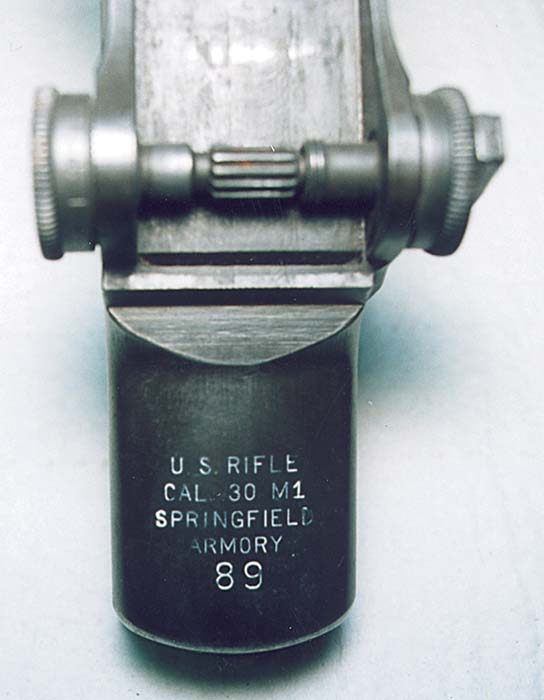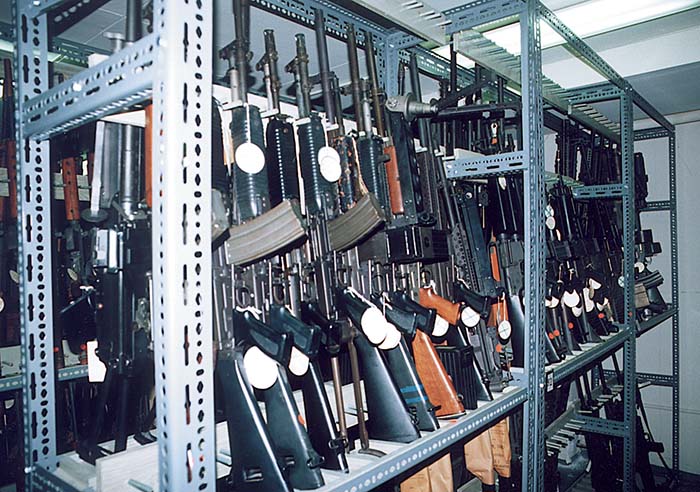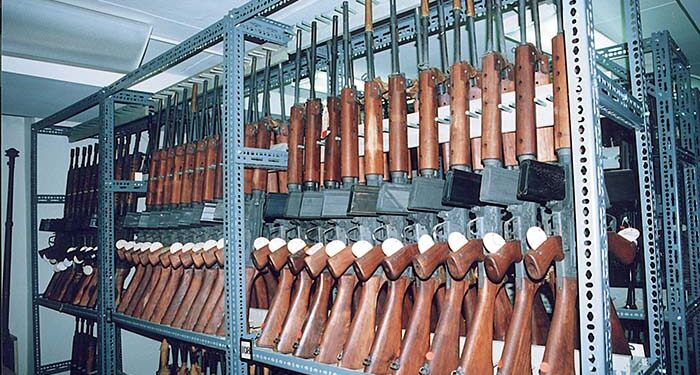By Frank Iannamico
Recently while doing research for my upcoming book on the Reising submachine gun, I made arrangements to visit the Quantico Marine Base located near Washington, DC. I had been communicating with Ken Smith-Christmas of the Quantico Museum about the possibility of examining any Reising guns they might have in their possession. He told me that they did have a few Reisings, and if I would give him a few weeks notice he would be more than happy to show them to me. Shortly thereafter I was on my way to Quantico, Virginia.

The Marine Base at Quantico is located just off Interstate I-95 about 40 miles south of Washington, DC. The base encompasses approximately 60,000 acres, and is home to over 12,000 military personnel, their families and civilian employees. Thousands of troops were trained at the base during WWI, including units of the 4th Marine Brigade. After WWI ended, new tactics and techniques of amphibious warfare were conceived, developed and perfected at Quantico. These amphibious tactics proved invaluable during the Marine island battles in the Pacific Theater of WWII.
The small air facility at Quantico has been instrumental in developing helicopter techniques that were used in the Korean and Vietnam wars. More recently Quantico pioneered the development of V/STOL aircraft and amphibious assault ships. An interesting Marine Air-Ground Museum is located near the airfield. The museum’s many exhibits illustrate a chronological view of the Marine Corps Air-Ground team’s development and role in modern warfare. Sitting just outside the gates of the airfield is President Dwight Eisenhower’s presidential helicopter. Eisenhower was the first president to utilize a Marine helicopter for transportation. The world famous FBI Academy, universally recognized as a leader in law enforcement training and research is also located on the base. There also are many historical Marine statues located throughout the area.
After an unintentional tour of the Marine facility at Quantico and a few phone calls I finally located Mr. Smith-Christmas’s office. After the proper introductions Ken and I drove across the base to an obscure, unpretentious building. We walked up to the building’s entrance and once inside I saw a huge vault door. I had a feeling something wonderful was about to take place. After making several telephone calls to security for authorization we were cleared to open the door. Once the huge steel door swung open and I was able to peer inside, Reisings vanished from my immediate thoughts.
The very first thing I saw were rows upon rows of what appeared to be wooden stocked FN-FALS. My first thought was, could these be the rare T-48s manufactured by H&R and High Standard for the service rifle trials in the mid 1950’s? Mr. Smith-Christmas confirmed my suspicions, yes they were, 78 of them in brand new condition! As I looked around I saw racks of miniguns, Vulcan cannons, chain guns and other exotic weapons of all types.
Some of the more unique weapons in the vault were: John Browning’s prototype “Potato Digger” serial number 1. Sitting on the floor was an experimental water cooled Lewis machinegun. Some of the shoulder fired weapons I saw were M3 carbines with infrared sniper scopes, M1 carbines with experimental folding stocks and Thompson style vertical foregrips. There were even a few Special Purpose Individual Weapon (SPIW) prototypes.

There were many weapons and not just one example, but seemingly endless rows of RPD’s, M60’s, Maxims and Vickers machineguns. One area contained a cache of weapons captured by the Marines in Desert Storm. These weapons were mostly Soviet designs, except for a WWII German MP44 Strumgewher leaning in the corner.
On the “milder” side I examined rows of various sniper rifles, a 1903 rifle equipped with a rare Pederson device, and several rare variations of he M1 Garand rifle.
Foremost in my mind was the fact that all these interesting, rare and historical weapons were sitting in this vault out of view from those folks like myself who would love to see them on display in museums. Mr. Smith-Christmas shared my feelings and said in the future something could be forthcoming. I conveyed to him that it would be a tragedy to see any of these weapons destroyed. He also agreed with me on that point as well.
Much to my relief I discovered that Mr. Smith-Christmas is an avid shooter and collector of firearms, and very much interested in preserving the weapons in the vault for present and future generations. It was good to know that there are people like Ken Smith-Christmas watching over these historic pieces.
| This article first appeared in Small Arms Review V2N8 (May 1999) |











